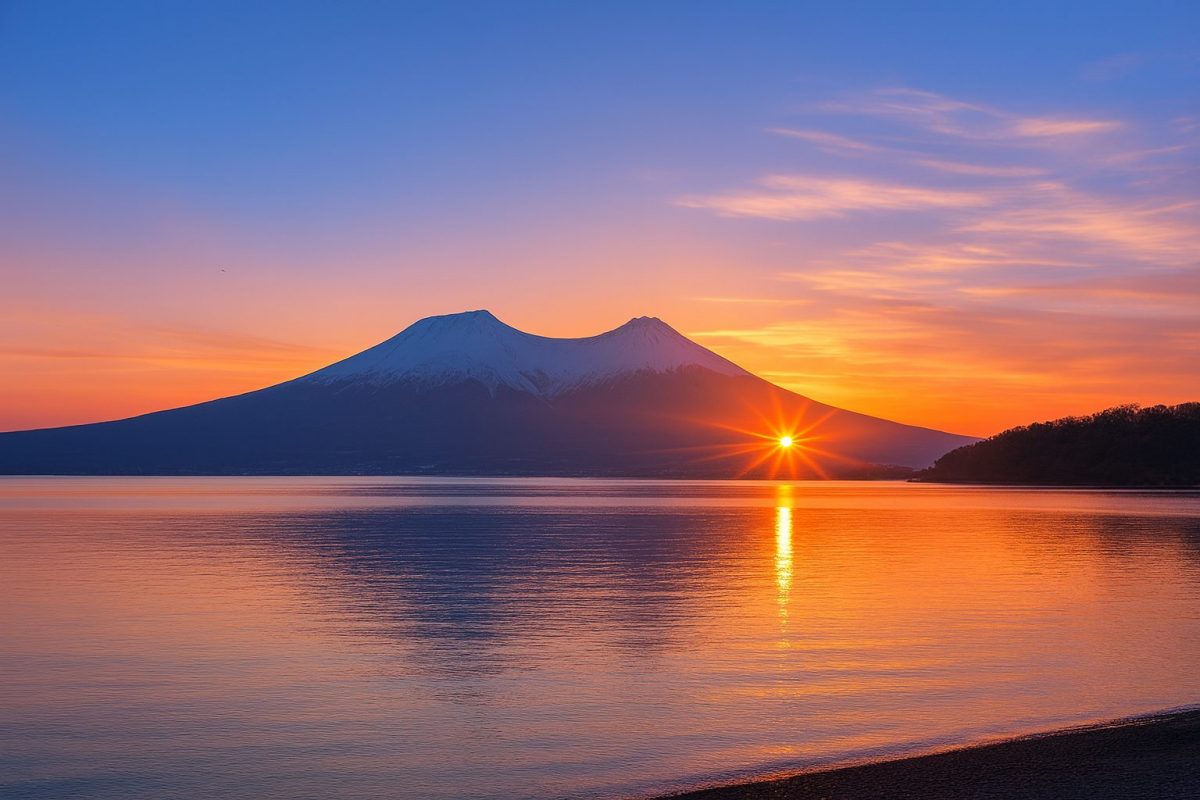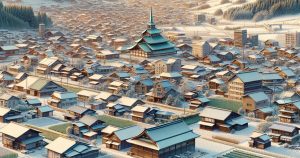| population | 13,334 peoples |
|---|---|
| area | 368.79 km² |
| population density | 36.2 peoples/km² |
Located in the central area of the Oshima Subprefecture in southern Hokkaido, Mori Town (Mori-machi) lies between the majestic Mt. Komagatake and the calm waters of Uchiura Bay (Funka Bay). Its name comes from the Ainu word Oniushi, meaning “a place rich in trees,” which perfectly captures the lush forests and fertile lands that define this region. With a long history dating back to the Jomon period, archaeological sites such as the Washinoki Stone Circle reveal ancient human settlement. Today, Mori is known for its thriving agriculture, fisheries, and tourism — and for being the birthplace of the famous “Ikameshi” (squid rice) bento. Each season paints the town with unique beauty — cherry blossoms in spring, lively festivals in summer, a harvest glow in autumn, and peaceful snowy landscapes in winter — making Mori a place where nature and culture live in harmony.
Cultural Traditions
Mori Town is deeply rooted in a culture that harmonizes nature with human life. Influenced by the heritage of the Ainu people, traces of their language and customs remain in local place names, dialects, and festivals. The town’s name, derived from the Ainu word “Oniushi,” reflects its long-standing relationship with nature. The arrival of the railway brought development to the area, and Mori’s famous Ikameshi station bento became a national sensation. Today, agriculture and fisheries are the main industries — dairy farming, vegetable cultivation, and fruit growing (especially blueberries, tomatoes, and “Miyako pumpkins”) are key pillars of its economy. The town is also unique in that it’s pronounced “Machi” rather than “Chō,” distinguishing it among Hokkaido’s municipalities. Community spirit runs deep here, celebrated through events like the Mori Summer Festival and Snow Light Festival. These gatherings bring together locals and visitors alike, reflecting the town’s warm hospitality and deep connection to the land. Mori is a place where traditional culture, seasonal beauty, and everyday life coexist in balance.
Local Specialties
- Ikameshi (Squid Rice): The signature dish of Mori. Created in 1941 at Mori Station, it features squid stuffed with sticky rice and simmered in a savory sauce. This famous bento has repeatedly ranked among Japan’s top ekiben.
- Miyako Pumpkin: Known for its rich sweetness and smooth texture, this pumpkin variety is widely cultivated in the Nigorigawa area and often used in sweets and baked goods.
- Blueberries: Grown mainly in the Sawara area, these berries are popular for picking experiences and processed into jams and wines.
- Tomatoes, Cucumbers, and Potatoes: Grown in the fertile volcanic soil near Mt. Komagatake, Mori’s vegetables are prized for their sweetness and freshness.
- Geothermal Greenhouse Vegetables: The Nigorigawa Onsen district utilizes geothermal energy from hot springs to grow eco-friendly produce — a model for sustainable farming in Hokkaido.
Annual Events
- Winter Friendship Festival: Held every February, featuring snow sculptures, sledding, and winter-themed outdoor activities unique to snowy Hokkaido.
- Mori Cherry Blossom Festival: From late April to early May at Oniushi Park and Aobagaoka Park, where over 1,500 cherry trees bloom. Local food stalls and stage events add to the festive atmosphere.
- Mori Summer Festival: The town’s biggest celebration in late July, featuring traditional Bon Odori dances, a vibrant parade, and a grand fireworks display over the bay.
- Autumn Harvest Festival: Held in September to celebrate the local harvest with food markets, tastings, and sales of freshly picked produce.
- Mori Illumination: From December through winter, the town glows with warm lights, especially around the station and parks, creating a cozy seasonal scene.
Access
- By Air: The nearest airport is New Chitose Airport, about a 2.5-hour drive away.
- By Train: Take the JR Hakodate Main Line to Mori Station (about 90 minutes from Hakodate or 3 hours from Sapporo).
- By Bus: Accessible from both Sapporo and Hakodate via the “Express Hakodate Line” highway bus, stopping at Mori Town.
- By Car: About 3 hours from Sapporo, 2.5 hours from New Chitose Airport, and 1.5 hours from Hakodate via the Hokkaido Expressway (Mori IC).
- By Ferry: Visitors can also access Mori via nearby ports such as Hakodate Port or Yakumo Port, depending on the season and route availability.
Tourist Attractions
- Aobagaoka Park – A scenic park famous for cherry blossoms, walking trails, and cultural monuments.
- Oniushi Park – A lush green space near Mori Station, ideal for picnics and seasonal flower viewing.
- Nigorigawa Onsen – A historic hot spring area with over 200 years of history and a geothermal power facility.
- Washinoki Archaeological Site (Stone Circle) – A nationally designated Jomon-era site with one of Japan’s largest stone circles.
- Torizaki Gorge (Torizaki Hakkei) – A series of waterfalls and clear streams known for breathtaking autumn colors.
- Michi-no-Eki YOU・Yu・Mori – A roadside station offering a tourist information center, local product shop, and panoramic views of the bay.








